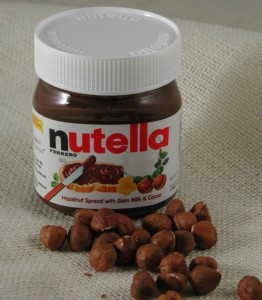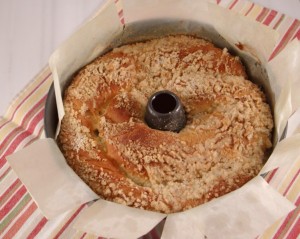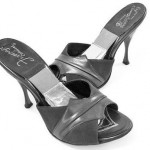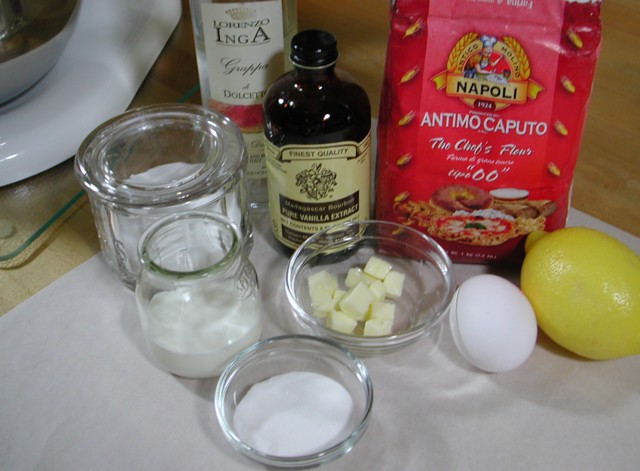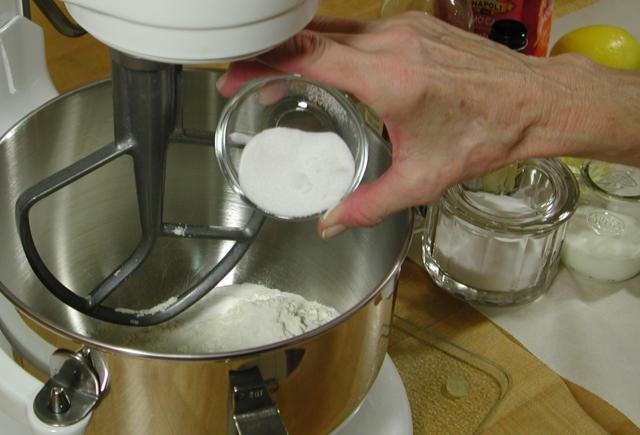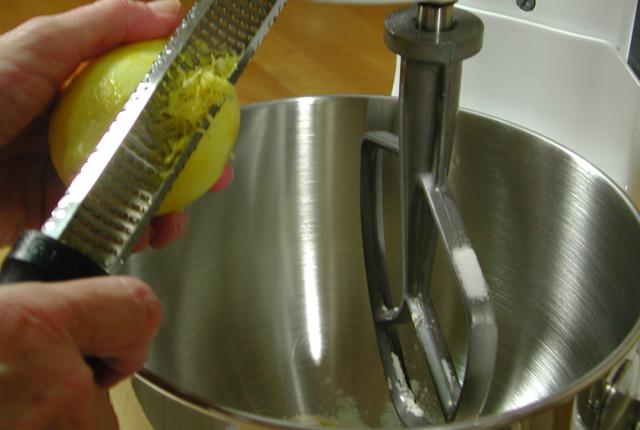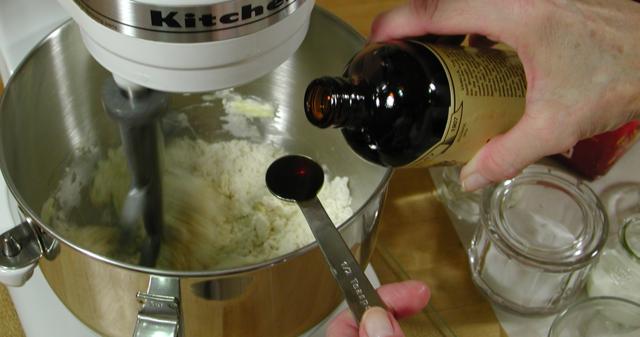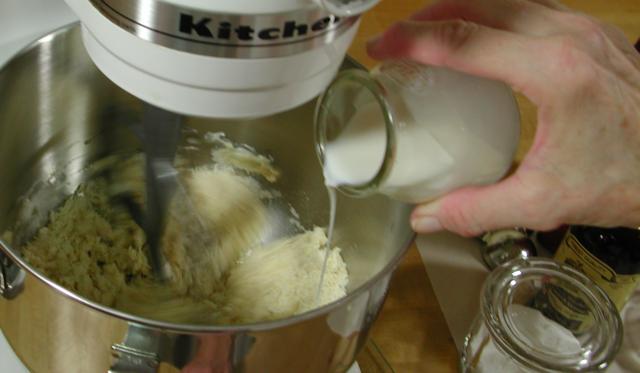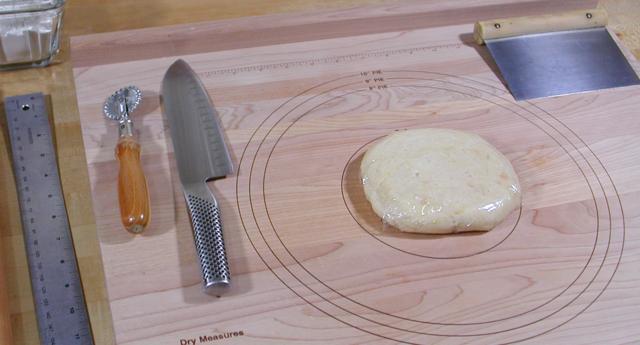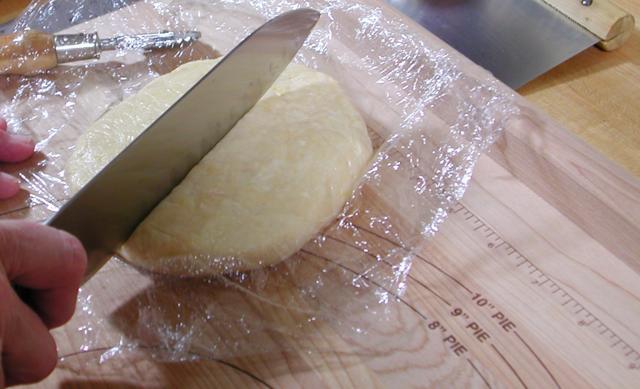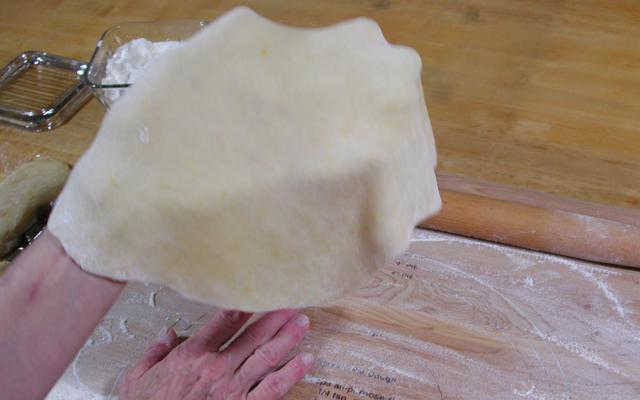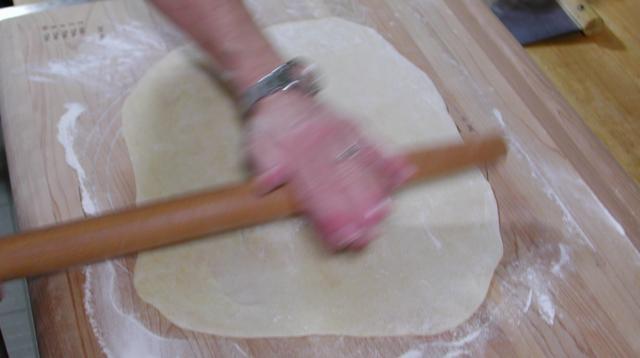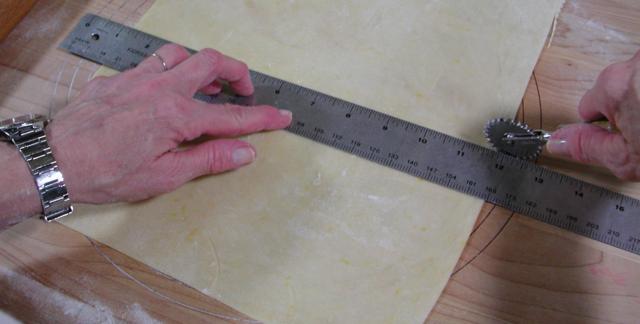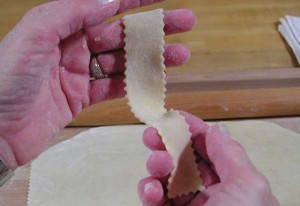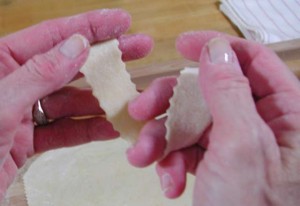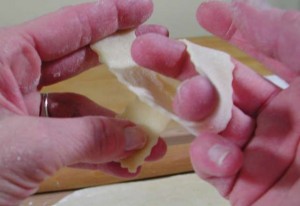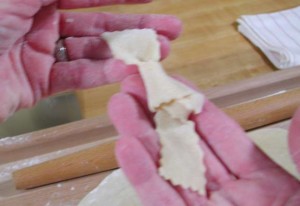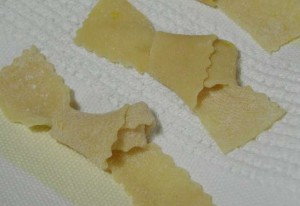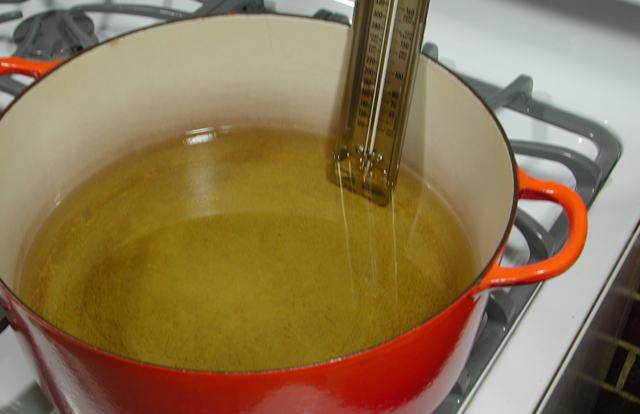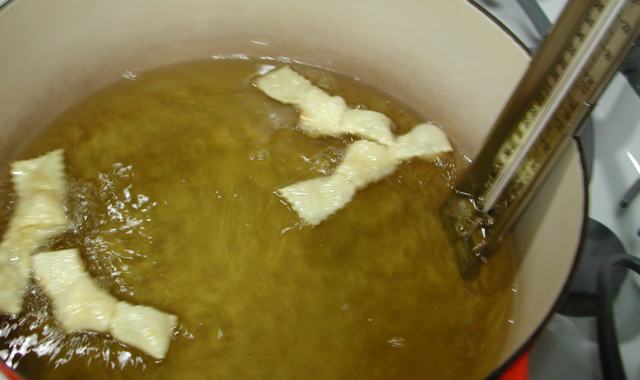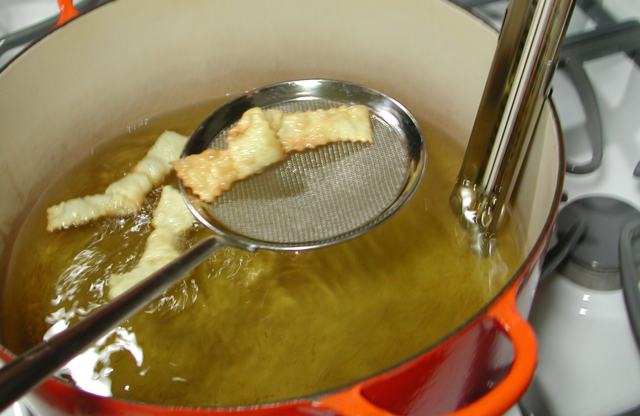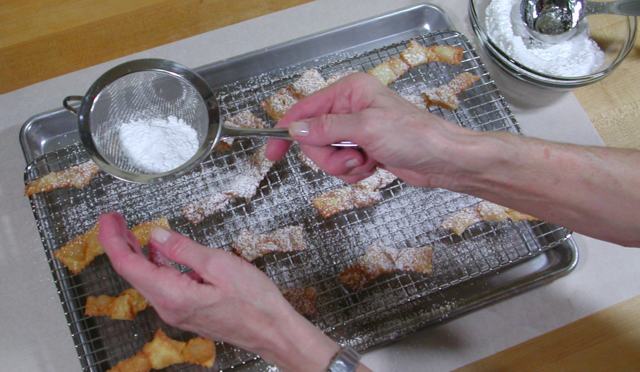Topic Index
The font size for a topic word is sized by the number of articles that reference that topic. The more articles the bigger the font.
Click on a word to search for posts with that topic. This page will reload with the search results.
Nutella Coffee Cake
I like Nutella. I really like sweet yeast risen coffee cakes, the kind with a dough like brioche. And the other day I was craving a sweet coffee cake. Can you guess what’s coming? Just in time for Little Christmas, it’s Nutella Coffee Cake, of course. Nutella, that delicious concoction of hazelnuts and cocoa seems to go with just about everything in the bakery department. Developed during World War II by Pietro Ferrero, it was originally supplied in a foil wrapped loaf called pasta gianduja. Over time the formulation was changed to the spread we know today and it became known as supercrema gianduja. And in 1964 the name was changed to Nutella. It has been sold in the United States since 1983, and in recent years it has become extremely popular. With good reason, I’d say. I think of it as the Italian answer to peanut butter. Check out the Nutella USA web site and enter the Nutella Monthly Case Sweepstakes to win a case of Nutella. Oh, one thing more, when you open a jar of Nutella don’t throw away the gold seal. Collect them to use to redeem cool Nutella stuff like tee shirts, mugs and more. Really. I mean how good does life get?
Many cultures have sweetened filled yeast breads; Italians have their nut filled Gubana from Friuli, Eastern Europeans have Babka typically filled with nuts and dried fruit while Jewish bakers fill their Babka with chocolate or cinnamon and crown it with streusel. Now I have Nutella Coffee Cake, a sumptuous brioche-like concoction filled with Nutella, rolled up, twisted, plopped in a pan, topped with streusel and baked to tender yeasty sweet-filled perfection.
I started with a sweet brioche-like yeast dough, rolled it out in 2 batches, just to make it easier to put it in the pan, spread each piece of dough with half a jar of Nutella, rolled them up jelly roll style, gave them a twist and put them in a tube pan. I figured that although I was craving something sweet, maybe, just maybe the Nutella along with the sweet dough would be too much. So I opted for buttermilk, just to give the dough a bit of a tang to counteract all that sweetness. Then I got to thinking I needed maybe just a little something more than the dough and the Nutella, something more on top perhaps. The idea of a streusel sounded darn good to me. I went with it. Once the dough was in the pan, I spread some butter on top and sprinkled it with a streusel of sugar, flour, butter and, in a nod to the Nutella, toasted hazelnuts. This is for those who are serious about their Coffee Cake.
For those of you who do not make yeast breads, fear not. Do not be daunted by the thought of working with yeast. I use SAF Instant Yeast, a baker’s dream. No dissolving, no worrying about the temperature of your liquids and no proofing. Just mix it in with the dry ingredients and you are ready to go. SAF Gold Instant Yeast is particularly good for use in sweet breads. Baked goods with lots of sugar can take forever to rise. Why? The sugar attracts the water and the yeast can not get any. Thirsty yeast will rise slowly. The yeast in SAF Gold needs less water, thus no conflict in your dough, only peace, harmony and a most remarkable rise. You will love it. You may not find it on your grocer’s shelf, however it is available from the King Arthur Baker’s Catalogue, along with just about every other cool item for baking.
I have called for 00 flour because I love the soft, tender dough I get when I use it. If you do not have it, you will still get a wonderful result with all-purpose flour. For more info on 00 flour, see my post on Crostoli.
A word about the hazelnuts – you will need to toast and skin them. Toasting brings out their wonderful flavor and allows you to skin them with some degree of ease. To toast the nuts, place them on a rimmed baking sheet in a 325 degree oven for ten to twelve minutes, stirring the nuts once or twice. Remove them from the oven, place them in a kitchen towel and rub them vigorously to remove as much of the skins as you can. You will never be able to remove all of the skins, and that is alright. Toasting and skinning is an important step because if left on, the skins will impart a bitter flavor to your final product.
I like to use a 2 piece non-stick angel food cake pan for this coffee cake. Even though I direct you to line your pan with parchment paper, the added benefit of a non-stick pan makes it that much easier to remove the coffee cake. If you are not familiar with yeast breads and rolled coffee cakes, this might all seem like a bit of a challenge, but press on. Your efforts will be rewarded and after you have made it once you will wonder what all the fuss was about. A nice thing about this recipe is you can do the second rise in the refrigerator overnight. You can even make the streusel days ahead and keep it in the freezer until you are ready to use it.
When you assemble this coffee cake you may find that the ends of the dough do not meet, especially with the second piece of dough that will lay around the outside of the pan. Do not worry. Do not fuss. Just place the dough pieces in the pan so that the ends of one piece are on the opposite sides of the pan from the ends of the first piece. The dough will rise sumptuously, you will have luscious pockets of Nutella, and your Coffee Cake will have character.
I hope you try this Coffee Cake. It is just as good the day after as it is the day you make it. Do not think of this as a lot of work, but rather several steps. And since all you have to do for the filling is open a jar of Nutella, it is almost easy. (I have to be careful saying a recipe is easy. My sister Toni never believes me.) Try this one. It’s great for breakfast or brunch, and it is just in time for Little Christmas. I bet that like me, you will leave your fork on the table and pick it apart with your hands.
Nutella Coffee Cake
makes one large 10 inch coffee cake
For the dough:
2 3/4 cups 00 flour
1/3 cup sugar
2 1/2 teaspoons instant yeast
1/2 teaspoon kosher salt
1/2 cup buttermilk, at room temperature
2 whole eggs
1 egg yolk
1 teaspoon vanilla extract
4 ounces (1 stick) unsalted butter, very soft, cut into 16 pieces
2 tablespoons unsalted butter
extra butter for bowl and pan
flour for dusting work surface
For the streusel topping:
1/2 cup 00 flour
1/3 cup hazelnuts, toasted and skinned, about 2 ounces
1/4 cup granulated sugar
4 tablespoons unsalted butter, diced and chilled
For the filling:
1 13-ounce jar Nutella
To make the dough: combine flour, sugar, instant yeast and salt in mixer fitted with paddle attachment and mix briefly to combine. With mixer on low, add buttermilk, whole eggs, egg yolk and vanilla. Beat until dough comes together. Remove paddle and switch to the dough hook. Beat medium-low until dough is shiny and elastic, about 10 to 12 minutes.
Add one stick of the softened butter, piece by piece, blending completely after addition. Beat on low for about 5 minutes, until dough is smooth and elastic. Place dough in buttered bowl. Cover with plastic wrap and set aside in a warm, draft-free area. Let rise until doubled, about 2 hours.
When dough has doubled in size, remove plastic. Press dough down. Cover tightly and refrigerate at least 2 hours or overnight.
To make streusel topping: place flour, hazelnuts and sugar in bowl of food processor fitted with steel blade. Pulse briefly to coarsely chop nuts. Add butter and pulse briefly to form a crumbly mixture. Place streusel in freezer until ready to use.
Butter the bottom and sides of a 10″ angel food cake or tube pan, preferably with a removable bottom. Line bottom and sides of pan with parchment paper. Butter parchment paper.
Divide refrigerated dough in half. On a lightly floured surface, roll one half of the dough into a 13 x 8-inch rectangle. Use an offset spatula to gently spread half the Nutella over the rolled out dough to within 1/4 inch of the edges. Trim edges. Beginning at long end, roll up tightly as for jelly roll; pinch seam to seal. Holding one end of the roll in each hand, carefully twist the roll several times to make a spiral. Nestle dough in prepared pan, wrapping dough around central core, leaving ends loose. Repeat with the remaining dough and Nutella; place second roll in prepared pan, arranging it around the outer perimeter along side the first roll with the ends of the second roll on opposite sides of the pan from the ends of the first. The coffee cake will rise a bit unevenly. Don’t worry. I don’t. And by leaving the ends loose you will get some terrific pockets of Nutella in your finished Coffee Cake.
Melt remaining 2 tablespoons butter and brush it over the dough. (If your butter is very soft, you can spread it over the dough.) Sprinkle streusel mixture on top of dough. Cover with plastic wrap and let rise about 2 hours, until doubled in size.
Preheat oven to 350 degrees. Place tube pan on a baking sheet and bake in center of oven about 45 to 50 minutes, until a cake tester inserted in the center of comes out clean. Cool pan on a wire rack for at least 30 minutes before removing coffee cake from the pan and serving.
Note: You can click on any picture to see a slide show!
Crostoli
“Mamma, Che buona!” My father William Anthony Crocetti, born Guglielmo, did not speak English until he went to grade school. So I have no doubt that was what he exclaimed every time he ate the crostoli his mother made in her kitchen at 319 South Sixth Street in their south end neighborhood of Steubenville, Ohio. I wasn’t there, but those were his words. Senza dubito. And I bet Dino echoed his big brother.
Italians have been making these treats for hundreds of years. A recipe even appears in Pellegrino Artusi’s seminal cookbook, L’Arte di Mangiar Bene (The Art of Eating Well), first published in 1891. Although these delightful pastry knots are the prototypical Carnevale indulgence, they are also served at Christmas, New Year’s and Easter. This type of dolci is called nastri delle suore (nun’s ribbons), but that would never do for Italy, a country whose inhabitants identify themselves by regional ties first and as Italians second. Twenty regions – more than twenty names. These treats are called galani or frittelle alla Venezia in Venice and the Veneto, crostoli in Friuli, cenci (rags and tatters) or donzelli (young ladies) in Tuscany, frappe in Umbria, sfrappole or lattughe (lettuces) in Emilia-Romagna, chiacchiere (gossips) in Lombardy, chiacchiere di suore (nun’s gossips) in Parma, bugie (lies) in Piemonte and gigi in Sicily. Da vero. Call them what you will, they are fried dough, and I love fried dough. Like my father, I grew up eating these deep fried delights.
We called my grandmother Mom, and no typical nonna was she. When she arrived at our home I could always tell if she had a treat for us; instead of exiting her car and making her way directly up our driveway she went first to her passenger door, opened it and removed a long flat box. Then up our driveway she walked, box in hand, the clack-clack-clack of her Spring-o-lator shoes announcing her approach. We never knew what she had in that box, but we always knew it would be good. We four kids, my brothers Guy and Marc and my sister Toni and I, loved the cookies and we gobbled them up. My mother could always tell who had done most of the gobbling – the powdered sugar on the guilty party’s hands, face and chest was a dead giveaway. In fact that is how these cookies got their Piemontese name, bugie – liar’s cookies – as in “No Mamma. It wasn’t me, no mamma. I don’t know who ate the cookies…” Another of this cookie’s colorful names is chiacchiere or gossips. Some say the name came from the ladies of Lombard and the nuns of Parma who ate them as they gossiped. Still another source tells us the name originated with the sound the knots make when dropped in the cooking oil – “Pssst !” – just like the town gossip as she summons her listeners. Great stories all, which ever is true.
This cookie has a variation for every nonna. Some call for grappa, others get their alcohol kick from Gran Marnier, vin santo, white wine or rum while a few eschew spirits altogether. In Tuscany they are often made with olive oil in place of butter, and some regions use lard or shortening. Some use orange in place of lemon or no citrus at all. For the finishing touch, some cooks use confectioner’s sugar while others choose cinnamon sugar. As to the shape, some are plain ribbons, some are formed into pretzel-like shapes while others are twisted and pinched in the middle. You will also find flat squares or rectangles, some with one or two slits along the middle. This is the tradition of Italy’s beloved nonne at work, the tradition of variation on a theme that makes this cuisine so inviting, so forgiving, and so much fun.
Flour in Italy is classified by how finely it is milled, either 1, 0 or 00. Doppio zero is the most finely milled and feels like talcum powder. Do not confuse how finely ground the flour is with its protein content. Any strength flour can be ground into doppio zero. Just as we have pastry flour, all-purpose flour and bread flour with their varying protein contents, so do the Italians. They just have the added luxury of varying degrees of milling. To see the full range of flours available to the Italian cook go to the Molino Caputo website. I use a doppio zero flour that is comparable in protein content to our American all-purpose flour. Doppio zero flour is available at Italian markets and Amazon. com. If you can not find it, regular all-purpose flour will do nicely. Use the same amount the recipe calls for.
Mom made her dough by hand in the traditional manner – mounding her flour on a wooden board, making a “well” in the center, filling it with the ingredients and incorporating them with a fork. In a concession to the age of the mechanized kitchen I use my KitchenAid.
This dough is a dream to work with. Do not be intimidated by the idea of rolling it very thinly. You will be able to do so with great ease. Honest. On the subject of frying oil – Mom used solid Crisco, and there is no reason to change that. But if you have something else on hand, peanut oil, vegetable oil, feel free to make use of what is in your pantry. Mom drained the cookies on brown grocery bags. Some cooks use paper towels. I have found that placing the fried cookies directly on a cooling rack suspended over a sheet pan works very well.
A note about these cookies: they fry up very quickly, so be sure to have everything you need close at the ready. Banish the kids and pets from the kitchen. You will be working with a large volume of very hot oil.
And finally, do not overcook the crostoli. If you do you will not taste the grappa!
As the Italians say “Divertiti!” Have fun!
Form knots and place on a floured tea towel.
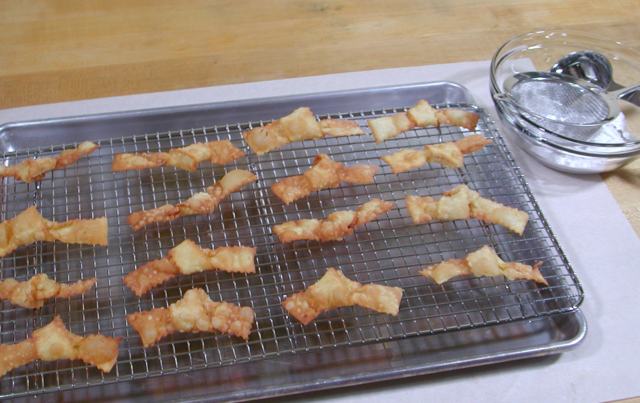
To keep things neat, place your tray and rack on a large piece of parchment. Have ready a bowl of confectioner's sugar and a small strainer.
Crostoli
makes about 3 ½ dozen
200 grams 00 flour (This should measure 1 ½ cups when lightly spooned into measuring cups, then leveled with a flat edge.)
1 tablespoon granulated sugar
zest of 1 lemon
generous pinch salt
1 large egg, lightly beaten
1 tablespoon unsalted butter, at room temperature
1 tablespoon grappa
1 teaspoon vanilla extract
3 to 4 tablespoons whole milk
shortening or oil for frying
confectioner’s sugar
In a mixer bowl fitted with paddle attachment, combine the flour, sugar, lemon zest and salt. With mixer running add egg, butter, grappa and vanilla. Gradually add 3 ½ tablespoons of milk to form a soft malleable dough. Remove dough from bowl, pat into a disk. Wrap in plastic, and set aside to rest for 1 hour.
Line a sheet pan or tray with a tea towel. Lightly dust the towel with flour. Set aside. Divide dough in 2 pieces, keeping the one you are not using wrapped in plastic or covered with a towel. On a lightly floured board, roll out dough as thinly as you can, about 1/16-inch thickness; dough should be almost translucent. Using a ravioli cutter cut dough to form ribbons 6 inches long and 1 inch wide. Tie a knot in the center of each ribbon, and place on the towel-lined pan in a single layer. Keep the knots covered as you work.
Meanwhile heat a generous amount of oil to 350 degrees in a heavy deep-sided pan. A candy thermometer placed on the side of your pan assures correct cooking temperature. Have ready a rack placed over a sheet pan. Fry the knots, a few at a time, until they color, about 20 to 30 seconds. Remove with a slotted spoon, spider or metal tongs, and place on rack to drain. Sprinkle liberally with confectioner’s sugar. Crostoli are best eaten the day they are made.
Note: You can click on any picture to see a slide show!

